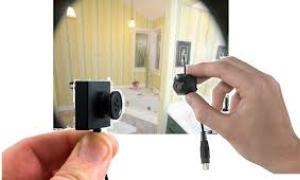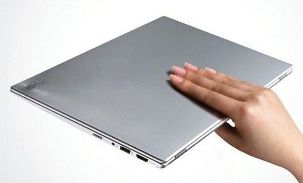Fear not ladies and gentlemen, I am here to explain how your 15 year old, seemingly dim-witted, cousin makes beautiful videos of his neighbor. What is even more shocking is that his neighbor is a 130kg 17-year old boy with blond, sweaty moustaches. Is there no limit to what technology can do?
I’m sure you’ve seen lots of casual home videos lately that don’t look anything like what you grew up watching on ‘America’s funniest home videos’. Those were shot on consumer video cameras. Whereas, now almost everything is shot on a DSLR (Digital Single-Lens Reflex) camera. So what makes these DSLRs so special? Two things: the size of the CCD/CMOS, and price.
Advantages of DSLR cameras
The CCD (Charged Couple Device) or CMOS (Complementary Metal-Oxide Semiconductor) is the image capturing part of the camera: think of it as a negative. The bigger the image acquisition area, the less light you need to capture action. Compared to a consumer video camera or handy-cam, the CCD of a DSLR is almost five times larger, and almost twice as large as 35mm film. Having such a large capturing area in natural light is basically like having a stack of ‘Get out jail free’ cards while playing monopoly: you can’t go wrong. Even if you shoot against the light, or worse, against a blue/white energy-saver, your shot will still look a hundred times better with the bulb’s light wrapping itself around your subject. No, you’re not Jean-Pierre Jeunet, you’re just using a camera that has a ridiculously large image acquiring area — it’s the equivalent of shooting your not-so-favorite cousin’s wedding with a 70mm film for the IMAX: overkill.
Since DSLRs are made for stills, data rate has never really been a problem. It takes a picture and stores data close by in a memory card — no sweat. So camera manufacturers keep increasing CCD size (more mega-pixels, more resolution, and more money) much like computer manufacturers keep upping the processor speed. But on the other hand, video cameras couldn’t do the same because they were taking, at minimum, 24 frames per second, which at anything over 1MP is a lot of data. Over the last few years however, technology has made it possible for the manufacturers to use the still cameras to take up to 30 frames per second, compress and package it as a video file. This comes at a price, a heavy price that you should be aware of before you decide that DSLRs are the best thing that happened to the video world.
Disadvantages of DSLR cameras
Firstly, DoF (Depth of Field). The one thing that makes videos from these cameras look so much like film is the shallow depth of field. That means you see the big fat tear rolling down the heroine’s cheek in sharp focus, while the big fat water buffalo in the background is a nice colorful blur — just what you’re used to seeing on the big screen. Incidentally, that’s exactly what the biggest problem with DSLRs is; focus. With such a small depth of field and subjects that move, it’s nearly impossible to keep your subject area in focus all the time. It is especially hard because the stock lenses that come with these cameras are not designed to be focused manually. The result is a constantly shifting focus that screams amateur like nothing else. Strike one.
Secondly, heat. You’d think we deal with it enough living in Pakistan, with up to 12 hours of load-shedding, but no, there’s more. Processing data from that large CCD at 25 to 30 frames per second produces a lot of heat, something that these cameras aren’t designed to dissipate. Result: they get hot very quickly, and they shut down. Strike two.
Thirdly, audio. Frankly, there’s really not much in terms of audio that DSLRs offer. Monitoring and controlling audio levels are a distant dream, at least with out-of-box DSLRs. The only input is a solitary phono-microphone option, one that doesn’t take line inputs. You can use the onboard mono mic, but that’s not fit for broadcast. Strike three.
Other than that, there’re a host of other small, pesky little bugs in DSLR video that add up. Rolling shutter, for example, with the famous Wobble, Skew, Smear, and Partial Exposure problems. Then there’s short battery life, the fact that you can’t get a video-out continuously for external monitoring. Also it’s stubby, brick-like form-factor makes for very unnatural camera movements. Bad lenses made of plastic, which is what all the stock lenses are. Personally, after having shot extensively on all kinds of cameras, I would say shooting professionally on a modern day DSLR is a bit of a headache.
Useful tricks
But let’s try and improve the out-of-the-box solution that we can buy for around 100,000 rupees. Firstly, install the Magic Lantern hack. It’s a firmware update that adds a bit of functionality for video by giving you zebra patterns for exposure and control over the audio. Any serious videographer would also ditch the stock lens and opt for a prime lens. Put aside anywhere from 70,000 to 500,000 rupees for a fast, sharp glass lens with a finite focus wheel (unlike the plastic ones that keep turning to infinity). You need at least three; 24mm, 50mm, 90mm. That’s a lot of money so you better hope that you love that camera make and mount — you might change the camera but you’ll want to hang on to your lenses.
For audio you need an audio adaptor with XLR inputs that lets you set levels manually and monitor the signal. It easily connects condenser and dynamic microphones, wireless microphone receivers, external mixers, consoles, and whatever else you want to throw at it. You can also use a recorder that has all of the above so you can record separately at a higher quality. Having the option of XLR inputs opens you up to a huge rental market of high quality microphones that would make a noticeable difference to your production quality.
With a good set of lenses and a mixer or recorder, the next purchase should be a rig: a rail support system to distribute weight, add handles and grips, follow focus, matte box, and whatever else your inner geek wants to throw at it. These go anywhere from Rs. 25,000 for a ‘Made in India’ one to 500,000 for a Zacuto. So basically for shooting broadcast quality video comfortably, you’re spending around 500,000 to 600,000, on your camera. Now that’s not something that the smart camera manufacturers missed — they put two and two together, took all the good things about a still camera shooting video and made it more video-friendly. That’s precisely what both RED and Blackmagic Design are doing; they’re selling core machines that are essentially CODs that throw out video signals at very little compression rates to an external recording device. Again, that’s an option that would be too expensive by the time you add basic accessories to it. So RED, being the original rebel-with-a-cause camera manufacturer, wanted to show the big boys like SONY and CANON how to make a 2k sub $10,000 camera, the big boys were working on the next generation of sub $5,000 super 35mm sensor sized video cameras.
These cameras, like the SONY NEX-FS series, or the JVC GY-HM series have all the good things of a DSLR along with the necessary stuff of a video camera, and cost pretty much the same as what your 7D would cost if it were rigged up for shooting serious video like music videos, or short films. If however you’re just shooting video of your 137 kg heavy weight champion, the DSLR is made for you.

